Blackjack has many terms and basic rules which players should be familiar with if they want to leave the casino as winners. Hit, Stand, Surrender, Double Down, and Split are crucial for the game as they indicate the possible actions players can take. In this chapter, we will concentrate on the term Double Down.
Most of the players are familiar with it but are not so sure when to apply it in the game. In order to illustrate all of the possibilities this move offers the players and to get to the bottom of it, we will start from the very beginning. It is really important for players to acquire as much information and knowledge as possible about doubling down as it is very common and they are bound to face it at some point during the game.
Doubling Down In The Past
In the past, when the casinos first started offering blackjack, there were restrictions on when players could double. Gamblers were allowed to do so only when they had a two-card hand with a final total of eleven or ten. In any other case, players were deprived of the chance to double down and take advantage of this move.
But time changes and so does blackjack. Nowadays, the casinos allow the rest of the additional moves and players have the freedom to decide when to double. Some single-deck variations still have rigid doubling down rules, allowing players to make this move only when holding two-card totals of 9 through 11.
The purpose of this is to increase the casino’s advantage. The house edge in single-deck blackjack would be almost non-existent had the rules (including those for doubling) been as liberal as those in shoe games.
Liberal doubling rules help the players because they give them the chance to capitalise from advantageous spots. If doubling is altogether unavailable, blackjack fans face a house edge increase of 1.48% in multiple-deck variations.
The casino advantage increases by 0.09% at tables where players can double down only on 9, 10, and 11. A further house edge boost of 0.18% is inherent to games where one can double down on 10 and 11 only. Doubling after a split is also very beneficial to players. The absence of this option leads to a house edge increase of 0.14%.
Doubling down can be a double-edged sword for many gamblers and this is the reason why they should acquire the needed knowledge for it. Having to choose among so many options, many of them find it even harder to make up their minds.
When to Double Down
When players are dealt the first two cards, they have the opportunity to make their original bet twice as much by doubling down. When gamblers double, they get one more card in order to complete their hand. The general rule of thumb is this move is recommended only when players find themselves in potentially advantageous spots. Doubling down decisions should be made in line with basic strategy and may differ between games based on deck number and the dealer’s drawing and standing rules.
In order to explain better the use of this term, let’s have a look at some common situations. For instance, if the dealer’s upcard is six, five, four, or three and the player’s first two cards are four and five, then it is recommended for them to double their wager as the dealer is placed in a bad position.
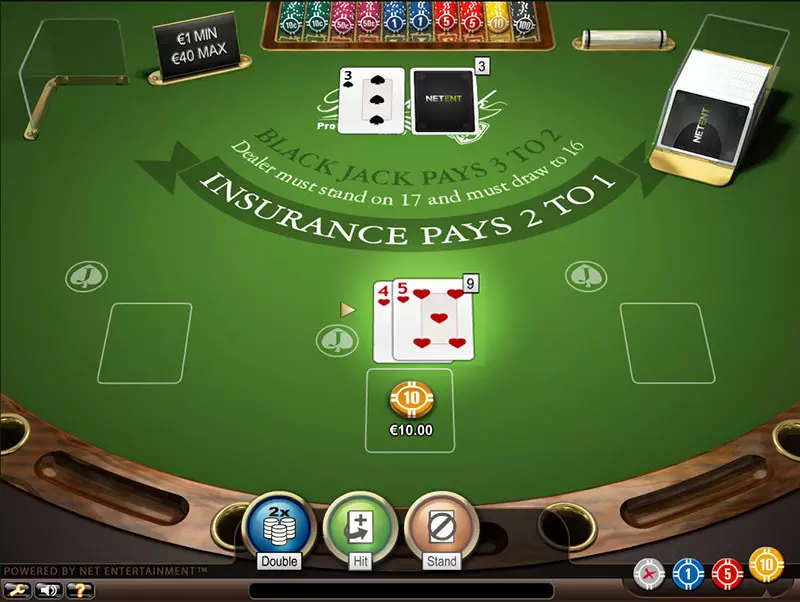
Double Down Signal
Regardless of what decision you want to make in blackjack, you must communicate it with its corresponding hand gesture. This way your intentions will be clear enough both to surveillance and the dealer. The correct hand signal for doubling down differs in hand-held blackjack and shoe games.
In single-deck or double-deck blackjack, players receive their cards face-down. To double down, they must toss them face-up in front of their chips and make another wager up to the amount of the original bet.
In many hand-held games, the double down card is dealt face-down. The dealer usually tucks it under the chips of the patron who doubles. The player has the right to immediately peek under to see its value. Many people prefer to wait until the end of the round when the other hands are resolved.
In shoe-dealt blackjack, the cards of the players are dealt face-up and cannot be touched. Players indicate they would like to double down by putting up a new wager equal to their original bet to the left side of the chips they have first posted. The dealer would draw one final card to the hand and place it perpendicularly to the player’s first two cards to indicate this is a double down.
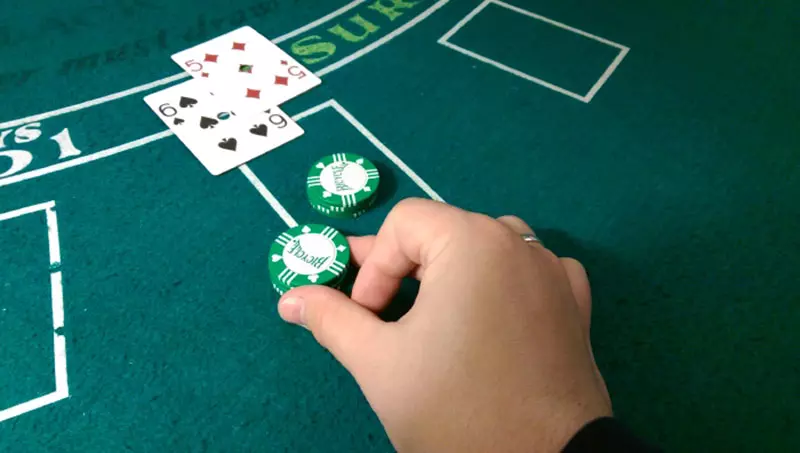
Any potential profits and losses would be based on the player’s new total bet. If you beat the dealer, you win twice as much and vice versa. One exception is made in some blackjack variations where the dealer does not receive a hole card and draws to complete their hand after players have made their moves.
When the dealer hits blackjack, the player loses only the initial wager under the Original Bets Only (OBO) rule. Any bets made on doubling and splits push with the dealer’s blackjack and are returned to the player.
It is really important for players to know how to properly express every move they would like to make correctly as this is also an indicator to the dealer and the rest of the players of how experienced they are.
Also, failing to do so might result in misunderstandings and troubles which can turn out to be very serious. The reason for this is that blackjack involves money and if the dealer is not able to read correctly the gestures players make, this can result in a loss for the particular player.
Double Down Options
As already mentioned, double down is the action that allows players to double their initial wager. However, there are many cases where gamblers double for less than 100% of their original bet. This can be often observed when players are not entirely sure whether the dealer is in a weak position but at the same time, they wish to proceed with such a move.
To be on the safe side, they bet less than the initial amount. For instance, instead of £10, players bet the amount of £5. They have the right to make their own decisions and play the game the way they want as long as their choices comply with the rules.
However, if they are wise enough they will seek an expert’s advice in order to find out more about this tricky situation. The professional opinion of many experienced gamblers is that such a decision – to double for less – is simply not beneficial. They advise that players should double down for the full amount or refrain from such a move. Players need to bear this in mind next time they face such a situation.
Doubling Down
Splitting Pairs
Blackjack Basic Strategy
Blackjack Hand 8 or 9
Blackjack Hand 10 or 11
The Impact of Doubling Down for Less on Players’ Expectation
But why is doubling down for less not as optimal? Let’s answer this question with an example where you hold a total of 11 made up of 2-9. The dealer starts their hand with a ten-value card. You are reluctant to double for the full amount because you fear you might lose twice as much against this strong upcard.
If you decide to simply hit your 11 against the dealer’s ten-value card, you will prevail approximately 56% of the time and lose the remaining 44% of the time. Assuming that your original wager is £10, you would register profits of 56 x £10 = £560 on average and lose 44 x £10 = £440. Your expectation would be £120 on average if you hit 11 against the dealer’s ten.
Doubling for the full amount is optimal because it increases your expectation in this favourable spot. To continue with the example, your overall wager would become £20 with a main bet of £10.
When doubling on 11 against the ten, the players’ winning percentage drops from 56% to 54%. This is because they cannot take more than one card after the double and would sometimes get stuck with lousy low totals like 12 or 13. It follows that your profits would be 54 x £20 = £1,080 whereas your losses will equal 46 x £20 = £920. This translates into £160 in net profits, or £40 more than the expectation hitting yields.
Now, let’s examine the value of doubling for less than the full amount of your original £10 wager, or £2.5, for example. This time, you will win approximately 54 x £12.5 = £675 and lose 46 x £12.5 = £575. In this case, your net profit drops to £100. This is £20 less than hitting’s expectation and £60 less than doubling for your full wager.
As you can see, the double down for less is the worst possible playing decision out of all viable strategy moves for 11 against a 10. Doubling for half the original bet, or £5 in this case, would yield the same expectation as hitting.
Doubling down for less may prove beneficial for tournament blackjack players, particularly during the final hand of the tournament. However, basic strategy players who play against the house should always double down for the full amount of their wagers.
Doubling Down on Blackjacks
Due to the lack of availability of standard blackjack games, some people have no other choice but to play at tables that pay for naturals at lower odds of 6 to 5. This is a bad idea to begin with since these payout reductions increase the house edge dramatically (by 1.39%). However, it is possible to make these games even worse.
Less versed players who join 6 to 5 tables would sometimes decide to double down on their blackjacks, treating them as a hand total of 11 rather than 21 and shooting for a payout of £2. This is a terrible idea and here is why.
Provided that a player posts a £1 wager and hits a blackjack, their payout at odds of 6 to 5 will be £1.2, assuming the dealer does not also have a natural. Let’s suppose the dealer’s upcard is a 5. This is a guaranteed win in this case. There is absolutely no likelihood of the player losing money here.
Doubling down on a blackjack becomes the better move only on condition it yields over £1.2 in winnings on average. However, doubling on a blackjack against the dealer’s 5 is successful roughly 63 in every 100 hands. Respectively, the player will lose roughly 30 in every 100 hands when making this move and push with the dealer on 7 hands.
Therefore, the expectation for doubling would be (63 – 30) x £2 = £0.66, which is a bit more than half of the expectation of the 6 to 5 blackjack payout. It follows players who double down on naturals in 6 to 5 games are forfeiting £0.54 from the value of their already mispaid blackjacks.
A Nine Hand and Doubling Down
It is very beneficial for players to double down if they have nine in their hand and if they are dealt with a ten-card or queen, jack, or king. If we do the maths, we will notice that this leaves them with a total of nineteen which is not a bad position to be in.
In case players draw an ace, the result will be twenty which is indeed a great hand. In order to make the most of this situation, it is recommended for players to double down when the dealer has three through six in shoe-dealt blackjack variations.
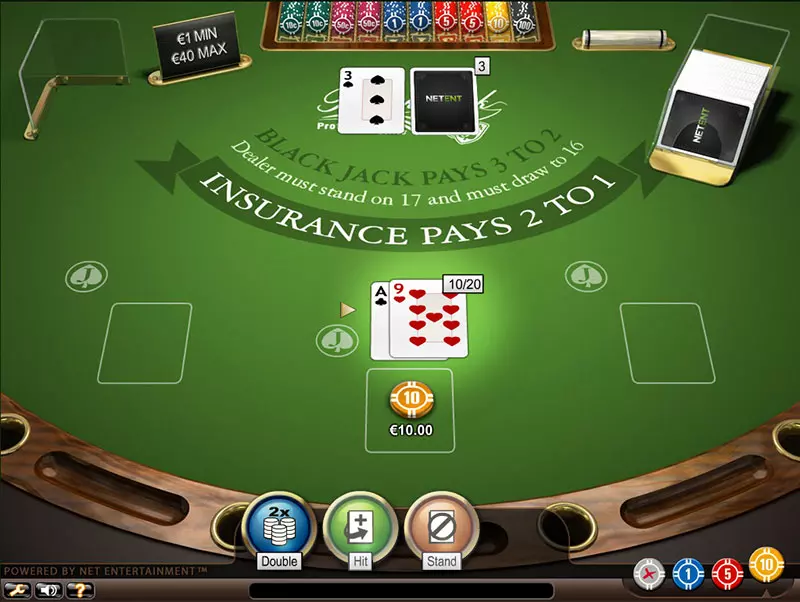
A Ten Hand and Doubling Down
In situations where players hold a two-card hand with a total value of ten, then they should double down against the upcard of the dealer of 2 through 9 in multi-deck games. In order to make the best possible moves, players should take into account the number of cards left in the deck. In case the deck doesn’t have many of them, it is advisable for players to refrain from doubling down.
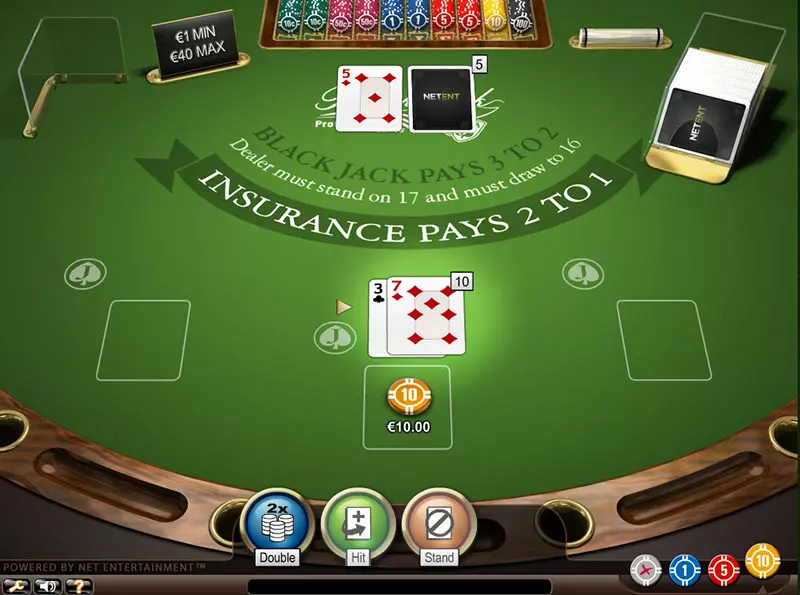
An Eleven Hand and Doubling Down
In such cases where players have an eleven hand, they should double down against 2 through 10 in games where the dealer must stand on both soft and hard 17. However, if the dealer hits soft 17, a total of 11 should also be doubled on against the dealer’s ace, in both single and multiple-deck variations.
The correct doubling decisions are also influenced by the number of decks in play. Pay attention to how many decks your chosen variant uses so that you can adjust your strategy when needed.
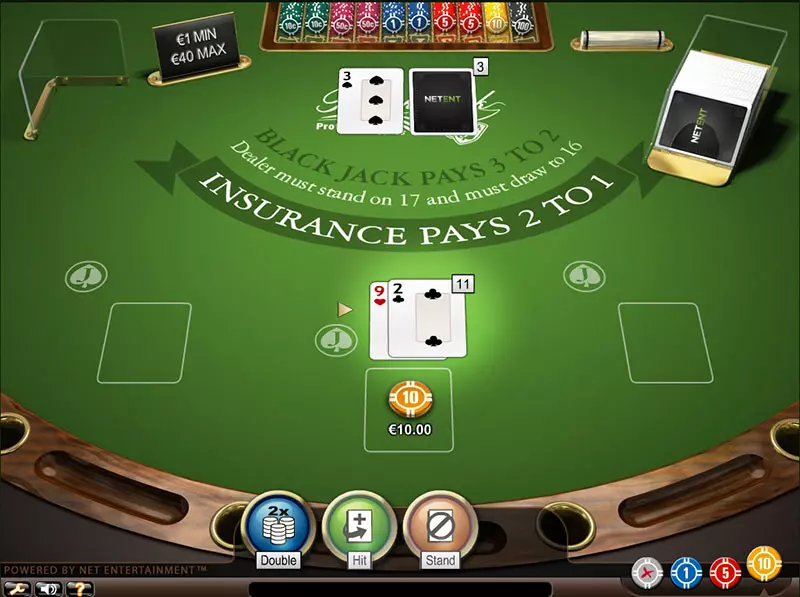
Doubling Down on Soft Hands
So far we discussed doubling on hard totals of 9, 10, and 11 but, believe it or not, this move is recommended as optimal on certain soft totals as well. This is usually the case when the dealer has weak upcards. Doubling on soft hands helps players maximize their expectation against the weak dealer and possibly improve their totals.
Soft hands are great to double down on because the player cannot go over 21 by drawing a third card. Soft doubling enables you to capitalise on your strength when the dealer is in trouble and more likely to lose.
The reason behind some soft doubling decisions is that 17, and even 18, are not good enough totals in blackjack. The double down allows you to improve your odds with zero risk of going over 21. When playing multiple-deck blackjack, basic strategists should always double on soft hands as follows:
- Soft 13 and soft 14 against a dealer with 5 or 6. The dealer has a high probability of exceeding 21 and losing the round when they start with these two low upcards.
- Soft 15 and soft 16 against the dealer’s 4, 5, or 6.
- Soft 17 and soft 18 when the dealer’s face-up card is 3, 4, 5, or 6. Provided that your game of choice requires the dealer to hit soft 17 (H17), you should also double on your soft 18 against a deuce.
- Soft 19 calls for a double down in H17 blackjack against a dealer with a 6.
How to Remember Soft Doubling Rules against the Dealer’s 3 and 4
Blackjack rookies frequently struggle with remembering the optimal moves for doubling on some soft totals. The good news is there is an easier way to learn these plays, particularly against the dealer’s 3 and 4. This method was penned by the expert player and gaming columnist Fred Renzey, who called it the Rule of 9.
There is really no need for you to memorize anything. All you have to do is add the value of the dealer’s upcard to that of the card dealt next to the ace in your soft hand. Provided that the result is 9 or higher, the optimal move is to double down.
If the two cards add up to less than 9, you should forget about doubling and hit your soft total instead. For example, the dealer shows a 4 and you have an A-6. You should double because you get 10 when you add 4 and 6, which is obviously higher than 9. In the event of the dealer showing a 3 against your A-3, you should hit since the sum of the two cards is 6, i.e. lower than 9.
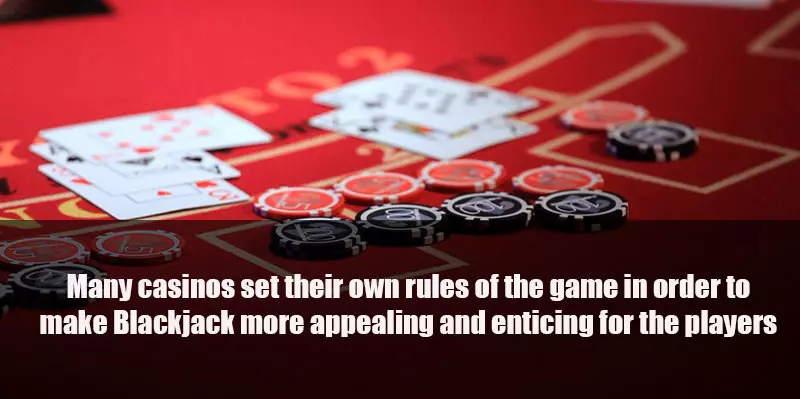
Double Down Rule Variations
As we already mentioned, there are many different blackjack variations. Even though all of them follow the fundamental rules of the game, some of the rules vary. When it comes to doubling down, there are some variations as described below:
- Discard double – almost no casinos offer this option as it allows players to surrender after doubling down.
- Double down on three cards – this variation allows doubling down on three cards. Not many blackjack tables offer it.
- Double on any number of cards – this option allows players to double down regardless of the circumstances.
- Hit after double down – in fact, this rule does not exist but inexperienced dealers might allow you to hit (to ask for another card) and then double down.
- Redouble – as the name implies, this option allows players to double on the card drawn after their first double.
- Double down on soft count – the rule allows blackjack devotees to double on any first two cards that contain an ace.
- Double down on hard count – players can double down on any totals except an ace.
Conclusion
It is really important for players to take their time and get familiar with this term and its specifications. The above-mentioned example situations are just a few of the many possibilities the game offers. If players want to make sure that they are prepared for most of them, they should have a closer look at the basic rules of the game. When they acquire the needed knowledge, they will be able to make reasonable decisions based on what they’ve read and learned and this is how the game really works.